
Word Count: 95060
(Note: This resource's metadata has been created automatically by reformatting and/or combining the information that the author initially provided as part of a bulk import process.)


Word Count: 95060
(Note: This resource's metadata has been created automatically by reformatting and/or combining the information that the author initially provided as part of a bulk import process.)

Word Count: 97838
(Note: This resource's metadata has been created automatically by reformatting and/or combining the information that the author initially provided as part of a bulk import process.)
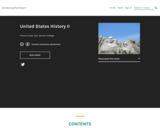
Word Count: 175609
(Note: This resource's metadata has been created automatically by reformatting and/or combining the information that the author initially provided as part of a bulk import process.)

Word Count: 285727
Included H5P activities: 1
(Note: This resource's metadata has been created automatically by reformatting and/or combining the information that the author initially provided as part of a bulk import process.)
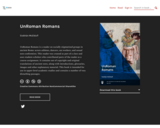
Short Description:
UnRoman Romans is a reader on socially stigmatized groups in ancient Rome: actors athletes, dancers, sex workers, and sexual non-conformists. This reader was created as part of a class and uses student-scholars who contributed parts of the reader as a course assignment. It contains out of copyright and original translations of ancient texts, along with introductions, glossaries, images and other explanatory material. This book is intended for use in upper-level academic studies and contains a number of very disturbing passages.
Word Count: 182077
(Note: This resource's metadata has been created automatically by reformatting and/or combining the information that the author initially provided as part of a bulk import process.)
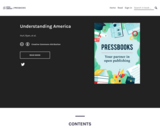
Word Count: 180528
(Note: This resource's metadata has been created automatically by reformatting and/or combining the information that the author initially provided as part of a bulk import process.)

Re-Envisioning Participation in 19th-Century Studies
Word Count: 47285
Included H5P activities: 12
(Note: This resource's metadata has been created automatically as part of a bulk import process by reformatting and/or combining the information that the author initially provided. As a result, there may be errors in formatting.)
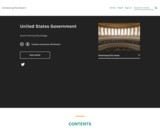
Long Description:
Curated from OpenStax by Deborah Hoag.
Word Count: 233347
(Note: This resource's metadata has been created automatically by reformatting and/or combining the information that the author initially provided as part of a bulk import process.)

Summary
U.S. History is designed to meet the scope and sequence requirements of most introductory courses. The text provides a balanced approach to U.S. history, considering the people, events, and ideas that have shaped the United States from both the top down (politics, economics, diplomacy) and bottom up (eyewitness accounts, lived experience). U.S. History covers key forces that form the American experience, with particular attention to issues of race, class, and gender.

Short Description:
U.S. History I covers the chronological history of the United States from before Discovery through Reconstruction.
Long Description:
U.S. History I covers the chronological history of the United States from before Discovery through Reconstruction and introduces key forces and major developments that together form the U.S. experience, providing a balanced approach that considers the people, events, and ideas that have shaped the United States from both the top down (politics, economics, diplomacy) and bottom up (eyewitness accounts, lived experience), with particular attention paid to issues of race, class, and gender.
Word Count: 267090
(Note: This resource's metadata has been created automatically by reformatting and/or combining the information that the author initially provided as part of a bulk import process.)
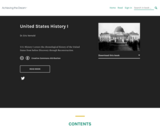
Short Description:
U.S. History I covers the chronological history of the United States from before Discovery through Reconstruction.
Long Description:
U.S. History I covers the chronological history of the United States from before Discovery through Reconstruction and introduces key forces and major developments that together form the U.S. experience, providing a balanced approach that considers the people, events, and ideas that have shaped the United States from both the top down (politics, economics, diplomacy) and bottom up (eyewitness accounts, lived experience), with particular attention paid to issues of race, class, and gender.
Word Count: 261295
(Note: This resource's metadata has been created automatically by reformatting and/or combining the information that the author initially provided as part of a bulk import process.)
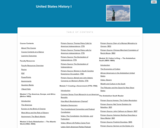
"Romanticism and myth surround United States history in contemporary popular culture. This course encourages students to develop a critical understanding of the history of our nation. This course will guide students through a wealth of primary sources, and view videos tied to clear learning objectives designed to improve their critical thinking skills. Sample assignments are included. Key topics include early globalization and European exploration, colonial societies, the English Empire, America’s War for Independence, the creation of the American Republic, the industrial transformation, Jacksonian democracy, westward expansion, “King” Cotton and idealism in the antebellum South, the troubled 1850s, and the Civil War to Reconstruction.
This course was developed using the OpenStax US History text with the inclusion of a primary source reader from American Yawp. The course also includes additional videos, images, and enhancements, as well as a quiz bank provided by Lumen Learning. Assignments were contributed by Thomas deMayo and Chris Thomas from Reynolds Community College."
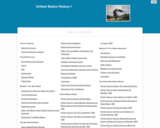
The authors of American Yawp begin their effort with a pertinent quote from Walt Whitman. This course takes an approach to history that fosters a method of critical thought and a rigorous questioning of the history of the United States. Key topics include the characteristics and legends of the New World, imperial European cultures and their clashes, British North America, colonial society, the American Revolution and the new nation, the early American Republic, the market revolution, the challenges of democracy in America, religion and political reform, the old south, the consequences of Manifest Destiny, sectionalism, the Civil War, and Reconstruction.
This course comes from The American Yawp, a free, collaboratively-built textbook curated by Joseph Locke & Ben Wright. It also includes the American Yawp Reader and a handful of other primary resources identified by various faculty across the country. Other minor adaptations and additions have been provided by Lumen Learning.
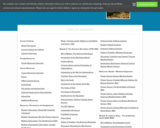
This Lumen Learning Waymaker U.S. History course aims to help students think critically about history and use historical thinking skills to describe, compare, contextualize, and construct historical arguments about major events in American history through 1877, from the European settling of the Americas to the Reconstruction Era.
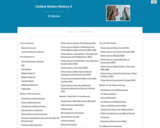
“History is our ongoing conversation with the past.” So say the authors of American Yawp. This course takes an approach to history that fosters a method of critical thought and a rigorous questioning of the history of the United States. Key topics include Reconstruction, Industrial America, conquering the West, capital and labor, the American empire, the progressive era, World War I and its aftermath, the 1920s, the Great Depression, World War II, the Cold War, post-war affluence, the 1960s, cultural and societal conflicts, the rise of the right and conservatism, and the recent past from 1990 to the Great Recession. This course is based on the collaborative, open, online text entitled American Yawp, including the American Yawp Primary Source Reader. The course also includes ancillary material from OpenStax US History as well as videos, images, quizzes, and other enhancements from various sources. Assignments were contributed by Thomas deMayo and Chris Thomas from Reynolds Community College. This course was developed using the OpenStax US History text with the inclusion of a primary source reader from American Yawp. The course also includes additional videos, images, and enhancements, as well as a quiz bank provided by Lumen Learning. Assignments were contributed by Thomas deMayo and Chris Thomas from Reynolds Community College.

Word Count: 255368
(Note: This resource's metadata has been created automatically by reformatting and/or combining the information that the author initially provided as part of a bulk import process.)
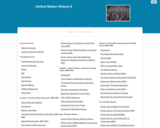
What does it mean to be informed? To know our history? This course encourages students to develop a critical understanding of the history of our nation. United States History II covers the chronological history of the United States from Reconstruction through the beginning of the twenty-first century and introduces key forces and major developments that together form the US experience, providing a balanced approach that considers the people, events, and ideas that have shaped the United States from both the top down (politics, economics, diplomacy) and bottom up (eyewitness accounts, lived experience), with particular attention paid to issues of race, class, and gender.
This text comes almost entirely from OpenStax U.S. History, but is supplemented with primary source readings from The American Yawp Reader. There are other minor additions and enhancements made by Lumen Learning or other faculty.
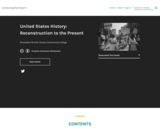
Word Count: 262415
(Note: This resource's metadata has been created automatically by reformatting and/or combining the information that the author initially provided as part of a bulk import process.)
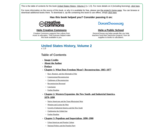
We constructed A History of the United States by reading and experimenting with each of the textbooks that are on the market. We already knew that many students approach college as if it is a quest to figure out what material is likely to be on an exam. We were surprised to see how savvy students were when they applied this model to textbook reading—many of them simply skip through about a third of a typical US history textbook. It was clear that we could eliminate lengthy opening vignettes, extended block quotes, and special sections that students assumed were placed in shaded boxes to indicate that they were not going to be on the exam.

This subject examines the unique culture that developed in the United States after World War II. The dawn of the nuclear age and the ensuing Cold War fundamentally altered American politics and social life. It also led to a flowering of technological experimentation and rapid innovation in the sciences. Over the course of the term, students will explore how Americans responded to these changes, and how those responses continue to shape life in the US today.